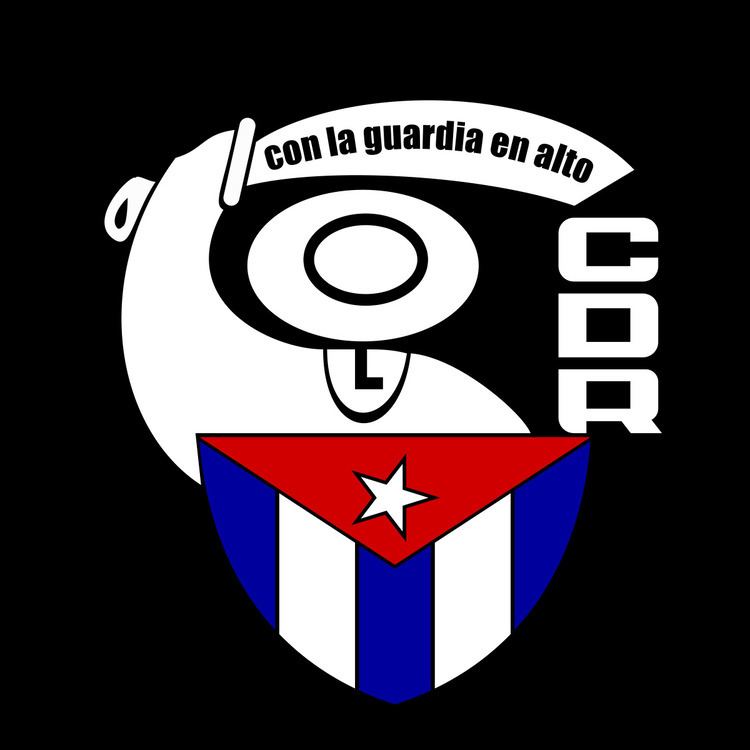 | ||
Committees for the Defense of the Revolution (Spanish: Comités de Defensa de la Revolución), or CDR, are a network of neighborhood committees across Cuba. The organizations, described as the "eyes and ears of the Revolution," exist to promote social welfare and report on "counter-revolutionary" activity. As of 2010, 8.4 million Cubans of the national population of 11.2 million were registered as CDR members. It is considered to be a secret police organization.
Contents
History
The CDR system was formed by Fidel Castro on September 28, 1960, following the 1959 Cuban Revolution, which overthrew the dictator Fulgencio Batista. The slogan of the CDR is, "¡En cada barrio, Revolución!" ("In every neighborhood, Revolution!"). Fidel Castro proclaimed it "a collective system of revolutionary vigilance," established "so that everybody knows who lives on every block, what they do on every block, what relations they have had with the tyranny, in what activities are they involved, and with whom they meet."
Activities and Controversy
CDR officials have the duty to monitor the activities of every person on their respective blocks. There is an individual file kept on each block resident, some of which reveal the internal dynamics of each household. Even after its 54-year existence, CDR activity remains contentious.
Strong critics such as A. Rivera Caro, a journalist for El Nuevo Herald, trace Fidel Castro's CDR system's origin to the similarly named and directed "committees of territorial vigilance" established by Adolf Hitler in 1935. Other CDR opponents further indict Cuba's CDR system of informants with an accompanying control of individual freedom, a breakdown of the Cuban family unit, widespread human alienation, and a pervasive interpersonal mistrust, at all levels of Cuban society.
CDR defenders counter that it has important additional responsibilities beyond monitoring individuals' political and moral background; these include arranging community festivals, administrating voluntary community projects, and organizing community attendance to mass rallies. Proponents further emphasize that CDRs have helped to put medical, educational, or other campaigns into national effect and that, being organized on a geographical basis, they also act as centers for many who do not work in farms or factories, and hence include a large proportion of female membership. The CDRs also take an active role in vaccination campaigns, blood banks, recycling, practicing evacuations for hurricanes, and backing up the government in its fight against corruption.
However, a 2006 Amnesty International report noted CDR involvement in repeated human rights violations that included verbal as well as physical violence. Critics also contend that the CDRs are a repressive tool, giving the government a heads-up about dissident activities on the micro-local level, by tattling on the non-compliant. They further identify CDRs as "one of the lead entities responsible for the wave of repression sweeping through Cuba," most recently, the brutal beatings and detention of 75 members of the Ladies in White in Havana in 2011 and 2012.
Elizardo Sánchez, a Cuban dissident, described the CDR as "a tool for the systematic and mass violation of human rights, for ideological and repressive discrimination. They assist the police and the secret service," whereas Lazaro Sanchez, a CDR supporter, says of the CDR that "the (U.S.) Enemy as well as Cuban sellouts take advantage of confusion to sow doubts. If we have to act, we are going to act. Our streets cannot belong to criminals, or to counterrevolutionaries. The U.S. Empire has the FBI; the Revolution has its CDRs."
